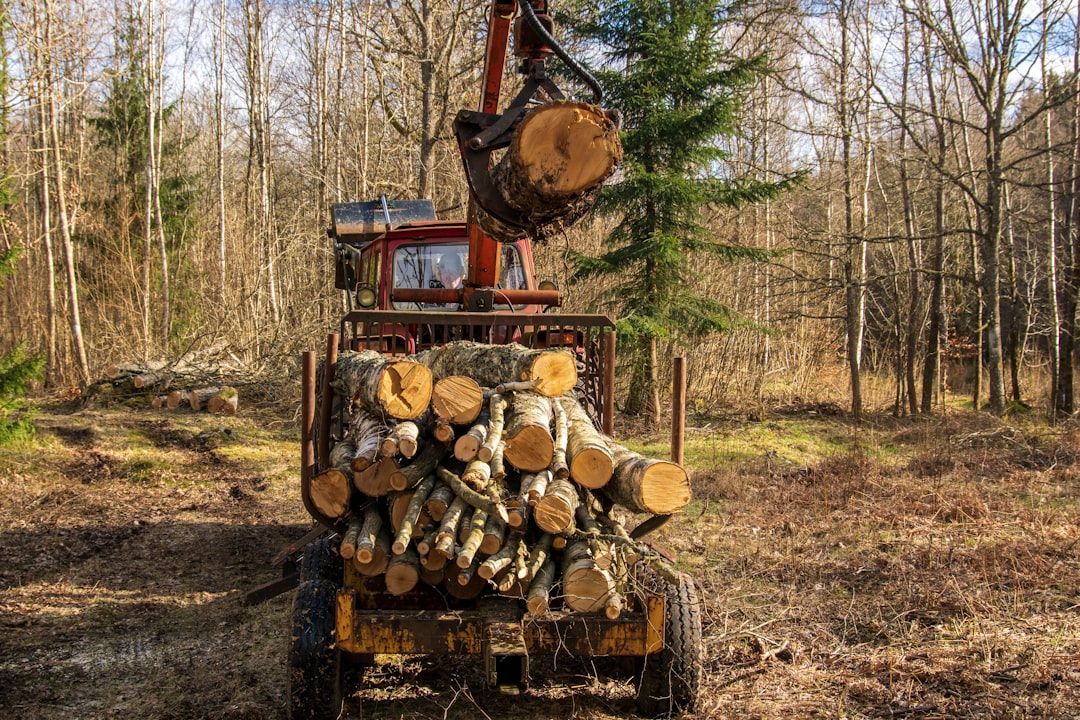Cutting Down the Price: What Tree Removal Really Costs

What You'll Actually Pay for Tree Removal
Tree removal cost typically ranges from $200 to $2,000, with most homeowners paying around $750. The final price depends on many factors.
Quick Cost Breakdown:
- Small trees (under 30 feet):$150 - $500
- Medium trees (30-60 feet):$450 - $1,200
- Large trees (60-80 feet):$800 - $1,500
- Extra large trees (80+ feet):$1,000 - $2,000+
Emergency removal can cost up to $5,000, while fallen trees are cheaper to remove at $75 - $300.
For property owners in the Rio Grande Valley, dealing with storm-damaged or overgrown trees can be an expensive headache. Tree removal pricing can seem mysterious because factors like tree size, species, health, location, and accessibility all affect the final bill.
This guide breaks down what you'll pay and why. We'll cover cost drivers, hidden fees, and ways to save money safely. By the end, you'll know how to budget for your tree removal project and avoid surprises.

Breaking Down the Bill: Key Factors That Determine Price
The cost of tree removal varies because it depends on several key factors: the tree's size, species, health, location, and the accessibility for the crew. The amount of skilled labor and specialized equipment required also shapes the final estimate.
Estimating Your Tree Removal Cost by Size and Diameter
The most significant factor in tree removal cost is size. Taller, wider trees require more time, equipment, and labor, and they generate more debris, which adds to disposal costs.

Here's a general breakdown by height:
- Small trees (under 30 feet tall): $150 to $500. These are the least expensive and often don't require heavy machinery.
- Medium trees (30-60 feet tall): $450 and $1,200. This includes many common mature backyard trees.
- Large trees (60-80 feet tall): $800 to $1,500. As trees get taller, the complexity and risk increase significantly.
- Extra-large trees (over 80 feet tall): $1,000 to $2,000 or more. These often require cranes or extensive rigging.
The trunk diameter also plays a major role. A thicker trunk takes more time and effort to cut, increasing labor hours and equipment needs. A 55-foot pine with a 30-inch diameter might cost more than a taller, thinner tree.
How Tree Type and Species Affect the Quote
The type of tree also sways your tree removal cost. Different species have unique wood densities and growth patterns. Hardwoods like oaks and maples are dense and heavy, making them more challenging and costly to remove than softer woods like pine. For example, a 60-foot oak might cost $250 to $2,500, while a similar-sized pine could be $200 to $1,600.
Palm trees have their own challenges, with heavy, water-filled root balls; removal can range from $300-$700 for a 30-foot tree to $1,200-$2,000 for an 80-foot one.
Also, check for protected or heritage trees. These may require special permits and arborist reports, adding time and fees ( $50 to $500 or more) to the project. Some states have strict rules against removing heritage trees like oaks unless they pose a clear hazard.
How Tree Health Impacts Your Tree Removal Cost
A tree's health significantly impacts the tree removal cost. A healthy tree is predictable and safer to remove. A compromised tree is dangerous and requires more expensive techniques.
A dead or dying tree is unpredictable and brittle, often requiring cranes or bucket trucks, which increases the cost. Trees with diseases or a pest infestation can be structurally weak, posing similar risks. Many tree diseases and injuries may require the felling of the tree altogether. Storm-damaged trees or those with structural issues like a severe lean, hollow trunk, or large cracks are highly dangerous and require immediate, careful attention, often at a higher price.
Location and Accessibility
Where your tree is located can increase your tree removal cost by 25% to 50%. A tree in an open field is easy to remove. One close to structures like your house or a fence requires careful, section-by-section removal to prevent damage, increasing labor time.
Trees near power lines pose an electrical hazard and require coordination with the utility company, adding to the cost. Obstacles like fences, pools, or landscaping also slow down the process. A tree in an accessible front yard is cheaper to remove than one in a fenced backyard, where debris may need to be hauled by hand.
Finally, urban vs. rural location matters. Urban areas may have stricter permit rules, while rural jobs might incur travel fees($50-$200 flat or ~$0.50/mile). As a company serving homeowners across the Rio Grande Valley, including McAllen, Edinburg, Mission, Pharr, and Brownsville, we understand these local factors.
The Full Picture: Average Tree Removal Cost and Additional Services
The national average tree removal cost is about $750, but most homeowners pay between $200 and $2,000. This wide range reflects how much individual factors can alter the price. A basic quote usually covers felling the tree and cutting it into sections. Be aware that many related services are considered add-ons and will increase the final bill.
Common Add-On Services
Always ask what's included in your tree removal cost quote. Common add-ons are often necessary for a complete job.

- Stump grinding: This uses a machine to grind the stump below ground level and typically costs $60 to $350 per stump, or $3 to $4 per inch of diameter.
- Debris removal: Hauling away all wood and branches can be an extra charge, around $70.
- Wood chipping: Chipping branches into mulch may cost an additional $85 to $198.
- Log splitting: Splitting the trunk into firewood is a special service that can add $75 to $99.
- Hauling fees: Large-scale hauling can cost up to $350, plus dump fees ( $30 to $100 per ton).
Emergency and Fallen Tree Removal
Emergency situations like a storm-damaged or fallen tree change the tree removal cost. Emergency service is more expensive because it requires an immediate response, often outside business hours, and involves higher risks. Costs can reach up to $5,000.
A tree that has already fallen, however, is often cheaper to remove ( $75 to $300). Since the dangerous felling work is done, the job is primarily cutting and hauling.
Permits and Arborist Reports
Before any work begins, check local regulations. You may need a permit to remove a tree, with fees from $75 to $450. Your Homeowner's Association (HOA) may also have its own rules. For large or protected trees, the city might require an arborist's report to justify the removal. This report details the tree's condition and can cost around $860, adding to your total tree removal cost.
DIY vs. Hiring a Professional: A Cost and Safety Analysis
When you see the numbers for tree removal cost, it's natural to consider doing it yourself. But for anything larger than a small sapling, we strongly recommend leaving it to the pros for safety and to avoid higher costs in the long run.
Here's a quick look at why professional help usually wins out:
| Feature | DIY Tree Removal | Professional Tree Removal |
|---|---|---|
| Cost | Lower initial outlay (equipment rental, supplies) | Higher upfront cost |
| Safety | High risk of personal injury, property damage | Lower risk due to expertise, proper equipment, insurance |
| Time | Can take significantly longer, especially for large trees | Efficient, often completed in a day or less |
| Equipment | Requires renting/buying specialized tools | Professionals bring all necessary, high-grade equipment |
| Insurance | No coverage for accidents or damage | Covered by the company's liability and worker's comp |
The Risks and Hidden Costs of DIY Removal
While DIY seems to save on tree removal cost, the risks and hidden expenses are significant. You'll need to rent equipment like ladders, ropes, and a wood chipper, which can cost $220 to $360. More importantly, tree removal is extremely dangerous. A falling tree or a chainsaw accident can cause serious injury or death. You are also liable for any damage to your property, your neighbor's property, or power lines, which can lead to staggering repair bills. The process is also time-consuming and requires proper technique to avoid catastrophic failure, as noted by experts like Popular Mechanics.
Why Hiring an ISA Certified Arborist is Often Worth It
For most jobs, hiring a professional is essential. Reputable companies carry insurance and liability coverage, protecting you from financial risk if an accident occurs. ISA Certified Arborists and their crews are trained experts who understand tree biology and can perform the removal safely and efficiently. Their hourly rates ($65-$140 for cutting, $100-$250 for an arborist consultation) reflect this expertise. They arrive with specialized equipment like cranes, chippers, and stump grinders to handle any job. As a digital marketing agency that helps businesses with Lead Generation for Contractors: Strategies , we know that hiring a pro is an investment in safety and peace of mind.
Is It Time to Remove? Key Signs and Money-Saving Tips
Deciding whether to remove a tree is a big decision. Sometimes, trimming can save a tree, but other times, removal is the only safe option. Knowing the signs that a tree must go can help you avoid a more expensive emergency situation down the road.
7 Telltale Signs Your Tree Needs to Be Removed
Keep an eye on your trees for these critical signs. If you spot any, call a professional for an assessment.
- More than 50% Dead Branches: If half the tree is bare or brittle, it's likely dying and poses a falling hazard.
- Trunk Decay or Cavities: Holes, soft spots, or fungi on the trunk indicate internal rot and structural weakness.
- Significant Leaning: A sudden or severe lean (15 degrees or more), especially with exposed roots, signals instability.
- Root Damage: Cut, girdling, or lifted roots compromise the tree's anchor.
- Large Cracks or Splits: Deep cracks in the trunk or major limbs are signs of structural failure.
- Pest Infestation: Pests like the Emerald Ash Borer can kill a tree from the inside, making it dangerous.
- Proximity to Hazards: A tree too close to your house (within 15-20 feet) or power lines is a risk, even if healthy. Roots can damage foundations, and falling limbs can cause property damage.
Smart Ways to Save on Tree Removal
While professional tree removal cost is an investment, you can lower the bill without compromising safety.
- Get multiple quotes: Get at least three estimates from insured companies.
- Schedule during the off-season (winter): Companies may offer discounts of 10% or more when demand is low.
- Remove multiple trees at once: Bundling jobs is more efficient for the crew and can save you money.
- Handle cleanup yourself: If you can haul away debris, you can reduce labor costs.
- Leave the stump: Skipping stump grinding can save you $60 to $350 if the stump isn't a hazard.
- Make the area accessible: Clear obstacles before the crew arrives to save them time.
- Save the wood for firewood: Ask the crew to cut the trunk into manageable lengths. You might even sell it to recoup some costs.
Frequently Asked Questions about Tree Removal
Here are answers to common questions about tree removal cost and the process.
Will homeowners insurance cover tree removal?
Generally, homeowners insurance covers tree removal cost if a tree falls due to a covered peril like wind or lightning and damages your property. However, it typically won't cover preventative removal of a healthy tree or one that fell due to neglect. Always check your specific policy and document any damage with photos before cleanup begins.
How long does it take to remove a tree?
The time required depends on size and complexity. A small tree(under 30 feet) in an open area might take under an hour to fell. A medium tree(30-60 feet) can take 4-8 hours, including cleanup. Large or complex trees, especially those near structures, can take a full day or more. Stump removal adds another hour or two.
Should I trim a tree or remove it completely?
This decision depends on the tree's health and location. Trimming(pruning) is for healthy trees that need shaping or have a few dead branches. It's less costly (typically $80 to $500) and can improve tree health. Complete removal is necessary when a tree is dead, dying, severely diseased, structurally unsound, or poses a safety risk that trimming cannot fix. If over half the tree is damaged, removal is the safer choice. An ISA Certified Arborist is the best person to help you make this critical decision.
Conclusion
Understanding tree removal cost involves looking at tree size, type, health, and location. While the average is around $750, costs can vary widely. Always prioritize safety over savings. Attempting a DIY removal is risky and can lead to injury or property damage. Hiring an insured professional with certified arborists is a wise investment in your safety and peace of mind. By using our tips—like getting multiple quotes and scheduling in the off-season—you can manage the cost effectively. Proactive tree care can also prevent expensive emergencies down the line.
If you're a home service business owner in the Rio Grande Valley, Austin, or Miami looking to grow, Antares Systems can help! Our expert Home Service Marketing Tips and digital strategies connect you with homeowners who need your services. Let's get you more leads!









